Chinatown Singapore is a captivating urban tapestry, where historic streets and colorful shophouses weave together a rich cultural narrative. From the intricate carvings of the Sri Mariamman Temple to the serene atmosphere of the Buddha Tooth Relic Temple, each corner of this vibrant neighborhood reveals a story waiting to be discovered. Traditional medicinal shops and bustling hawker centers echo the heritage, while modern boutiques reflect the area’s evolution. Exploring Chinatown is an immersive experience, as visitors explore the heart of Singapore’s diversity and uncover the fascinating tales that have shaped this dynamic community.
Key Points
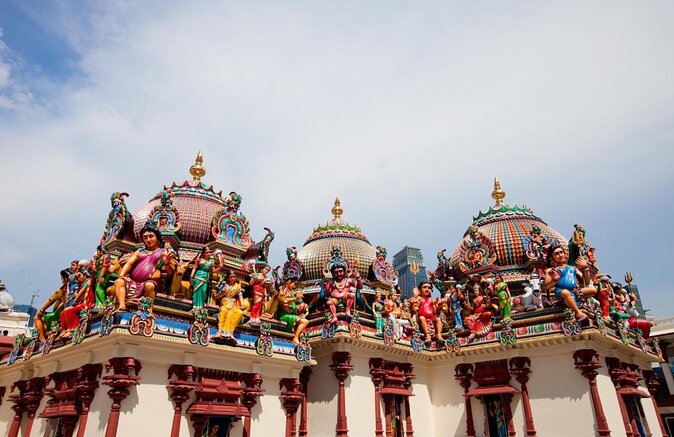
-
Chinatown in Singapore offers a captivating blend of sights, sounds, and aromas, reflecting the city’s rich Chinese heritage and cultural diversity.
-
Guided tours through Chinatown’s historic streets highlight iconic shophouses, traditional businesses, and the significance of landmarks like the Buddha Tooth Relic Temple.
-
Chinatown’s vibrant hawker centers and local shops provide immersive culinary experiences and opportunities to discover traditional souvenirs, preserving the neighborhood’s unique stories.
-
Diverse places of worship, such as the Sri Mariamman Hindu Temple and Jamae Mosque, exemplify Singapore’s multicultural fabric and the coexistence of various religious traditions.
-
Chinatown’s accessible guided tours and positive reviews from visitors emphasize the neighborhood’s must-visit status for an authentic Singaporean cultural experience.
Vibrant Atmosphere and Cultural Diversity
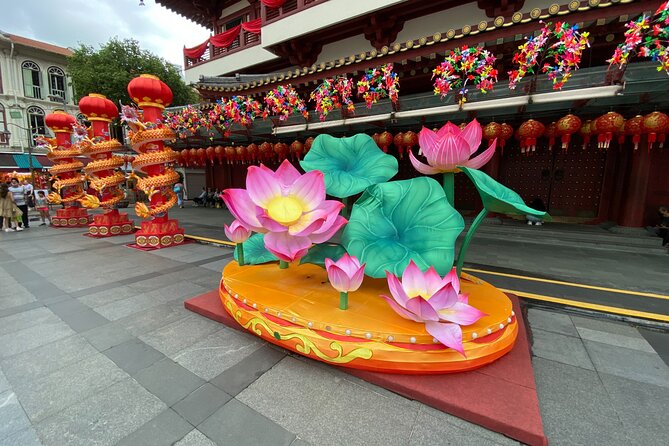
Chinatown’s vibrant atmosphere and cultural diversity captivate visitors, who are greeted by a kaleidoscope of sights, sounds, and aromas.
Historic temples and mosques stand alongside modern boutiques and eateries, creating a harmonious blend of old and new. Winding streets are lined with colorful shophouses, each hiding its own unique story and offering a glimpse into Singapore’s Chinese heritage.
From traditional medicinal shops to bustling hawker centers, Chinatown is a sensory delight, showcasing the richness of Chinese culture and the city’s multicultural identity.
Visitors can enjoy this dynamic neighborhood, exploring its layers of history and experiencing the lively, welcoming atmosphere that defines Chinatown Singapore.
You can also read our reviews of more tours and experiences in Singapore.
Guided Tour Through Historic Streets
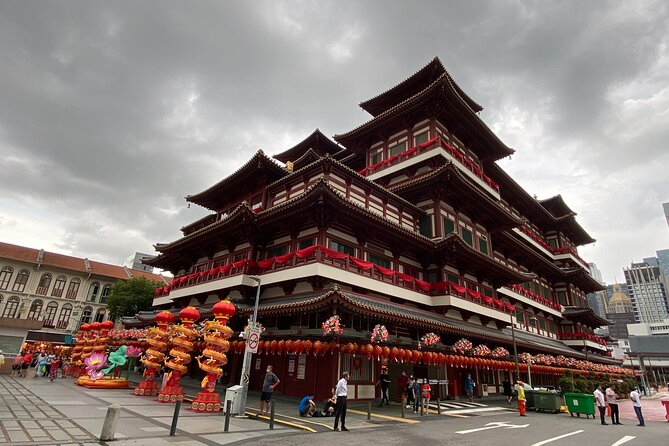
The guided tour through Chinatown’s historic streets allows visitors to enjoy the neighborhood’s rich heritage.
Beginning at Kreta Ayer Square, the tour takes participants on a walking exploration of iconic shophouses, traditional businesses, and cultural landmarks.
Travelers can savor local hawker foods and discover unique souvenirs along the way.
The guided experience lasts approximately one hour, providing an accessible and engaging introduction to the vibrant Chinatown community.
With complimentary admission, the tour offers an affordable way to uncover the stories and traditions that have shaped this dynamic Singapore district.
Iconic Shophouses and Traditional Businesses
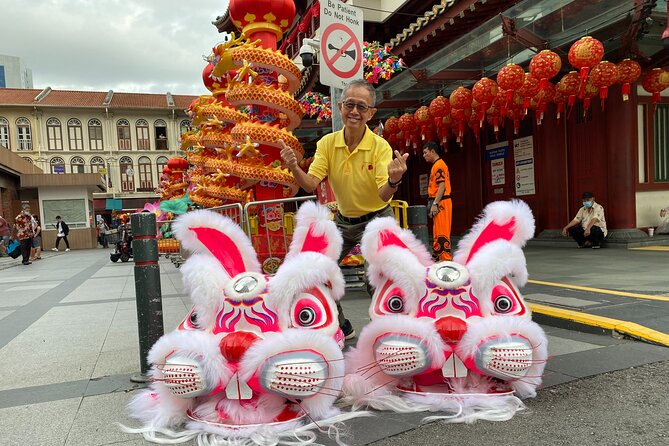
What makes the shophouses and traditional businesses in Chinatown so iconic? These beautifully preserved buildings represent a bygone era, showcasing the architectural styles of the early 20th century.
From the vibrant colors and intricate facades to the mom-and-pop shops that have operated for generations, these iconic structures embody the rich heritage and cultural diversity of Chinatown.
Visitors can explore traditional Chinese medicinal halls, calligraphy shops, and artisanal craft stores, each offering a glimpse into Singapore’s history.
These iconic shophouses and businesses are the heartbeat of Chinatown, preserving the traditions and stories that have defined this vibrant neighborhood for decades.
Local Hawker Foods and Souvenirs
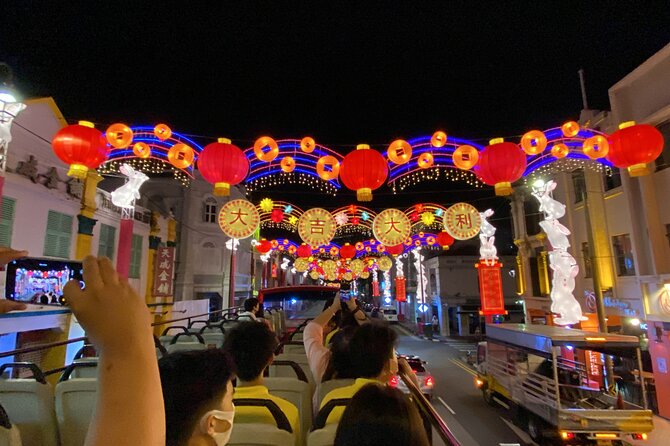
Amidst the bustling streets of Chinatown Singapore, visitors can indulge in a vibrant culinary experience at the local hawker centers. These open-air food courts offer an eclectic array of authentic Singaporean dishes, from savory chicken rice to delectable dim sum. Alongside the culinary delights, Chinatown’s shops beckon with a diverse selection of traditional souvenirs. From intricate porcelain figurines to vibrant silk scarves, the vibrant stalls cater to every taste and budget. Whether seeking a flavorful meal or a unique memento, Chinatown Singapore’s local hawker foods and souvenirs promise an immersive cultural exploration.
| Hawker Dish | Description |
|---|---|
| Hainanese Chicken Rice | Steamed chicken served with fragrant rice cooked in chicken broth |
| Laksa | Spicy noodle soup with coconut milk, shrimp, and various toppings |
| Char Kway Teow | Stir-fried rice noodles with soy sauce, chili, and various ingredients |
| Satay | Skewered grilled meat served with a peanut sauce dip |
Significance of Buddha Tooth Relic Temple
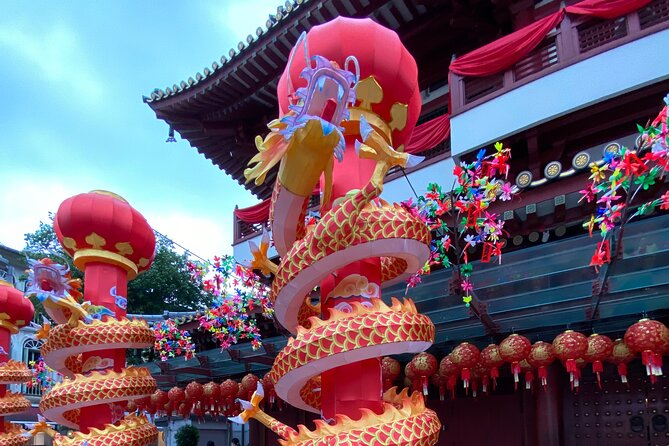
Beyond the vibrant hawker stalls and souvenir shops of Chinatown Singapore, the Buddha Tooth Relic Temple stands as a significant cultural and religious landmark.
Constructed in 2007, this ornately designed Buddhist temple houses what’s believed to be a tooth relic of the Buddha himself. The temple’s unique architectural features, including its two distinct entrances and main shrines, set it apart from other Buddhist temples in the area.
Visitors are drawn to the temple’s serene atmosphere and the opportunity to learn about its rich history and spiritual significance within the Chinatown community.
- Historical Singapore Bike Tour on Full-Sized Bicycles
- Puzzle Hunt Adventure – Fort Canning
- New Worlds End: The Only Street Immersive Tour in Singapore
- Half Day or Full Day Private Custom Walking Tour of Singapore
- Southern Islands Mission Impossible Tour With RHIB Boat
- Kayak Sailing in Singapore, Mangrove, Kelong & Pulau Ubin, Seafood Meal Included
Older Temples and Diverse Places of Worship
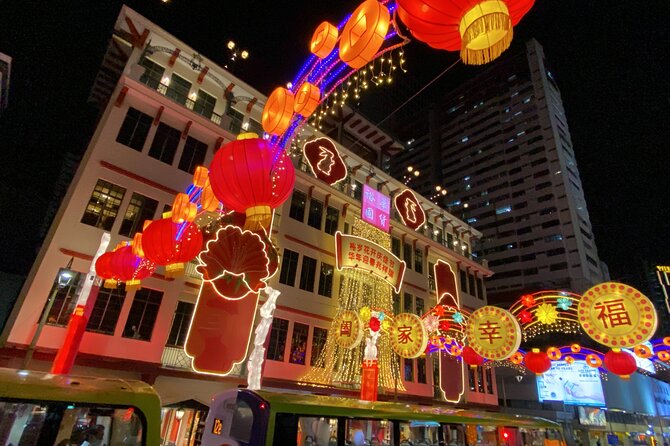
Alongside the iconic Buddha Tooth Relic Temple, Chinatown Singapore is home to an array of older places of worship that reflect the area’s diverse religious heritage.
The 19th-century Sri Mariamman Hindu Temple is one of the oldest in the country, featuring intricate carvings and vibrant colors.
The Jamae Mosque, with its distinctive green dome, serves the local Muslim community.
These historic sites stand as testaments to Singapore’s multicultural fabric, where different faiths coexist harmoniously.
Visitors can explore these places of worship, gaining insights into the various religious and cultural influences that have shaped Chinatown over the centuries.
Accessibility and Participation Details
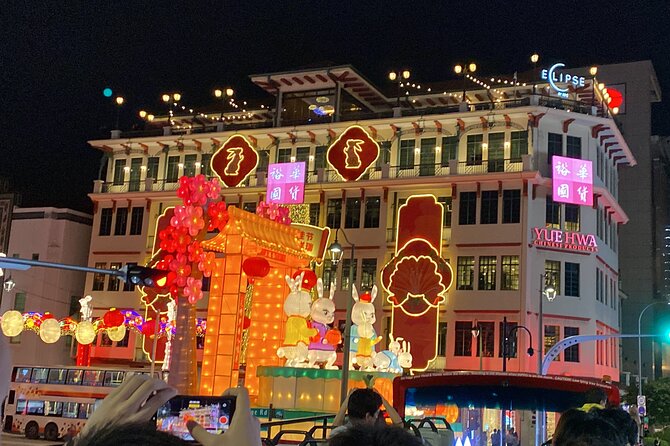
The tour of Chinatown Singapore is private, allowing only your group to participate.
It’s not wheelchair accessible, but it’s near public transportation options. Most travelers can join the experience, and confirmation is received upon booking.
Free cancellation is available up to 24 hours before the tour starts, providing flexibility.
The guided exploration lasts approximately 1 hour and covers the area’s historic streets, iconic shophouses, traditional businesses, local hawker foods, and cultural souvenirs.
Visitors can enjoy the rich stories and cultural insights shared by the guide, experiencing the blend of traditional and modern elements that make Chinatown Singapore a unique and vibrant destination.
Positive Reviews and Visitor Feedback
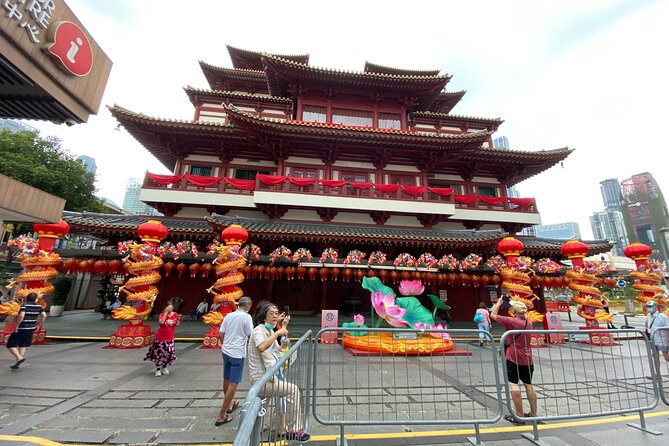
Chinatown Singapore has received positive reviews from visitors, with a perfect 5-star rating from 2 reviews on platforms like Viator and Tripadvisor.
Travelers appreciate the rich stories and cultural insights shared during the tour, highlighting the blend of traditional and modern elements in Chinatown.
The guided experience allows visitors to enjoy the vibrant atmosphere, exploring iconic shophouses, traditional businesses, local hawker foods, and cultural souvenirs.
Reviewers praise the tour’s ability to provide a well-rounded understanding of Chinatown’s history and contemporary significance, making it a must-visit destination for those seeking an authentic Singaporean experience.
Frequently Asked Questions
What Is the Best Time of Year to Visit Chinatown Singapore?
The best time to visit Chinatown Singapore is during major festivals like Chinese New Year or Mid-Autumn Festival, when the streets come alive with vibrant celebrations, lively cultural events, and special food offerings.
Are There Any Free Walking Tours Available in Chinatown?
Yes, there are free walking tours available in Chinatown Singapore. The guided tour starts at Kreta Ayer Square and lasts around 1 hour, providing an overview of the area’s cultural highlights at no cost to participants.
Can I Explore Chinatown on My Own Without a Guided Tour?
Yes, you can explore Chinatown Singapore on your own without a guided tour. The area is walkable, with many self-guided options to discover the neighborhood’s historical sites, shops, and hawker stalls at your own pace.
Are There Any Special Events or Festivals Held in Chinatown Throughout the Year?
Chinatown Singapore hosts a variety of vibrant festivals and events throughout the year, including the renowned Chinese New Year celebrations, the Mid-Autumn Festival, and the Hungry Ghost Festival, offering visitors immersive cultural experiences.
What Is the Dress Code or Attire Recommendation for Visiting Chinatown?
Visitors to Chinatown Singapore can wear casual attire, as there’s no strict dress code. However, it’s recommended to dress comfortably for walking around and exploring the vibrant markets, temples, and shops in this culturally rich neighborhood.
Recap
Chinatown Singapore offers an immersive cultural experience, where history, tradition, and modernity coexist harmoniously. Visitors can explore the vibrant streets, discover iconic shophouses, savor local cuisine, and experience the spiritual significance of the neighborhood’s diverse places of worship. With its accessibility and welcoming atmosphere, Chinatown Singapore invites travelers to uncover the captivating stories that make this neighborhood a true cultural gem.
More Tour Reviews in Singapore
- Departure From Singapore City to Singapore Airport by Sedan
- Wondrous Wildlife @ River Wonders + Roundtrip Transfers
- Wild Wild Wet Singapore Admission Ticket
- Singapore: Marina Bay Sands Observation Deck Skip the Line E-Ticket
- Gardens By The Bay Night Long-Exposure Photography
- Experience Rainforest Terrarium Workshop in Yishun
Not for you? Here's more things to do in Singapore we have recnetly reviewed
- 2 Best Canoe And Kayak Experiences In Singapore
- 25 Best Cruises And Boat Tours In Singapore
- 25 Best Food Tours In Singapore
- 11 Best Full-Day Tours In Singapore
- 2 Best 3 Day Tours In Singapore
- 2 Best 4 Day Tours In Singapore
- 7 Best Lunch Experiences In Singapore
- 7 Best Dining Experiences In Singapore
- 6 Best Dinner Tours In Singapore
- Airport Transfer: Singapore to SIN Airport by Business Car
- Guided Walking Tour to the Historical Attractions in Farrer Park
- Highlights of Singapore Instagram Tour
